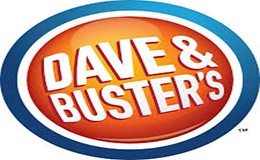| Ten things parenting has taught me about the human body 2012-04-02 Author: Clay Nichols |
1. There is not a single place, inside or out, of the human body that cannot be bruised, infected, covered with a rash, scabrous, bilious, infested, crusty or rancid. Sometimes all of the above. When we think of childhood injuries we think of a stubbed toe or a bump on the head, but absolutely everything else in between can and will be damaged.
2. Girls toot like crazy.
3.Human young are born with an innate knowledge of, and attraction to, all potentially damaging substances and fixtures. And zero understanding of physics. This is a dangerous combination. And explains why new parents are so jumpy.
4. Parents will sometimes injure themselves trying to injure an inanimate object that has injured their child.
5. In addition to being painful, broken arms are super creepy.
6. Medical researchers have identified a definitive cluster: vague stomach aches, un-diagnosable blahs, non-manifesting feverishness, unconfirmed chills and headaches among kids aged six to 16 on Mondays through Thursdays only. Weird.
7. Standing in line for tacos at ABA one morning, I looked at my wife and gestured to the large dark stain on my shirt. She hefted the baby and said “Eh, it’s only pee,” and we went back to waiting. In scant weeks, offspring can overwhelm the natural revulsion to pee, poo and throw up. But in less than a year after you potty train the youngest, it’s back with a vengeance. Which may explain why grandparents don’t change diapers.
8. Basic hygiene tasks, in order of difficulty to teach children: hand washing, teeth brushing, toilet training, nose blowing, thank you notes. While thank you notes are not strictly hygiene, they are the only things harder to get kids to do independently than blowing their noses, so I thought that worth mentioning.
9. Puberty.
10. There is something deeply satisfying about shoving foreign bodies up your nose. So satisfying, in fact, that even multiple trips to the ER cannot dissuade some children from indulging in this activity. The fathers of these children are often driven to think long and hard about the life choices they have made while sitting in the waiting rooms of aforementioned ERs.
Clay Nichols is one of the founders of DadLabs.com and co-author of “DadLabs Guide to Fatherhood: Pregnancy and Year One.” He lives in Austin with his wife Kim and three children












